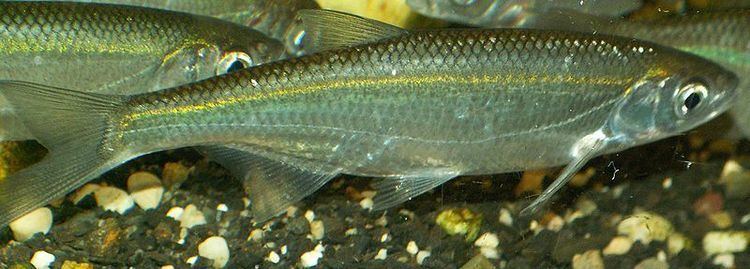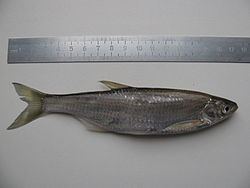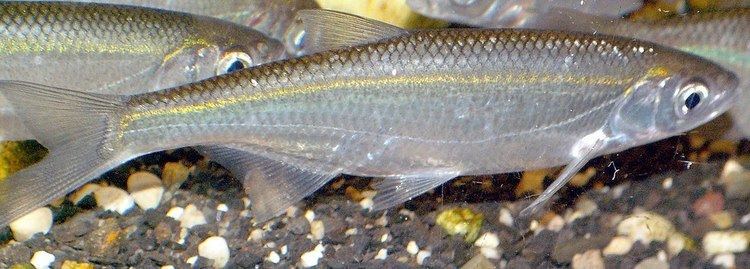Kingdom Animalia Order Cypriniformes Genus Alburnus Conservation status Least Concern Rank Species | Phylum Chordata Family Cyprinidae Scientific name Alburnus alburnus Higher classification Alburnus Found in Lake Garda | |
 | ||
Similar Common roach, Common rudd, Blicca bjoerkna, European chub, Common bream | ||
Viidikas common bleak alburnus alburnus
The bleak (Alburnus alburnus) is a small freshwater coarse fish of the cyprinid family.
Contents
Description

The body of the bleak is elongated and flat. The head is pointed and the relatively small mouth is turned upwards. The anal fin is long and has 18 to 23 fin rays. The lateral line is complete. The bleak has a shiny silvery colour; and the fins are pointed and colourless. The maximum length is approximately 25 cm.

In Europe the bleak can easily be confused with many other species. In England, young common bream and silver bream can be confused with young bleak, though the pointed upward turned mouth of the bleak is already distinctive at young stages. Young roach and ruffe have a wider body and a short anal fin.
Occurrence

The bleak occurs in Europe and Western Asia: north of the Caucasus, Pyrenees and Alps, and eastward toward the Volga basin and North-Western Turkey. It is absent from the major southern peninsulas and most of British Isles except southeast England. It is however locally introduced in Spain, Portugal, and Italy.
Ecology

The bleak lives in great schools and feeds upon small molluscs, insects that fall in the water, insect larvae, worms, small shellfish and plant detritus. It is found in streams and lakes. The bleak prefers open waters and is found in large numbers where there is an inflow of food from pumping stations or behind weirs.
Spawning
The bleak spawns near the shore in shallow waters. Some are found in deep water. The substrate is not important.
Importance
The bleak is an important food source for predatory fish. It is more sensitive to pollution than other cyprinids, which might explain the decline in North-Western Europe.
Uses
Bleak are used as bait for sport-fishing for larger fish. In 1656 in Paris, a Mr. Jaquin extracted from the scales of the common bleak, so-called "Essence Orientale" or "pearl essence", (used in making artificial pearls) which is crystalline guanine.
